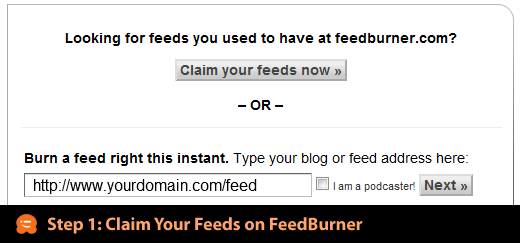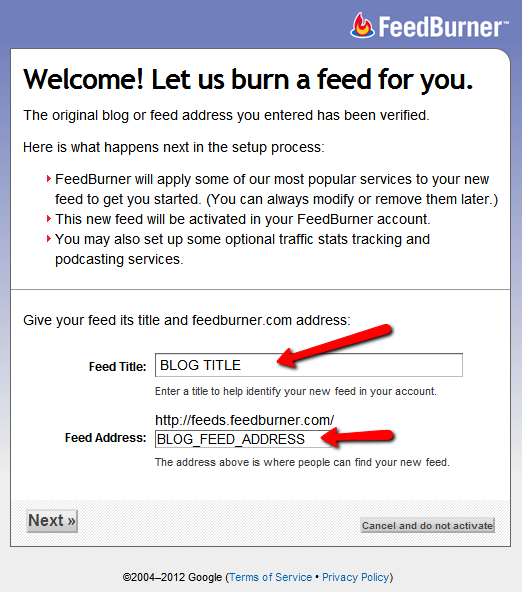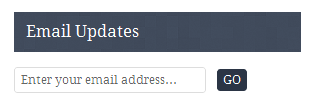This is part 2 of a 3 part series on using email marketing for your business website. Part 1 was about general email marketing information, why it is important, and how you might be able to take advantage of it.
Send Out New Content
If your website has a blog or you write “articles”, sending out teasers and content from your articles is a great way to keep people interested in your content and keep them coming back to your website. There are a few different ways that you can do this but I prefer Feedburner (a service from Google.) Most people when the think of Feedburner think of RSS Feeds (RSS feeds are a way for people to subscribe to your content and receive notifications through a “feed reader” when new content is posted. For a more detailed explanation see wikipedia.) Your WordPress website already has an RSS feed of content (http://yourdomain.com/feed most likely) and basically you set Feedburner to read that and republish it so you can track statistics on how many people are reading your content. The other thing that Feedburner can do is offer the ability to your subscribers to receive an email notification when new content is posted. Once you have that you can setup a form (like the one on the right side of my site) that allows people to receive email updates. These updates can be either single updates, or a “digest” at the end of the day if you frequently post content. This is what we are going to setup today.
“Burn” your feed
The first thing you do is go to http://www.feedburner.com. If you don’t have a Google account you will need to create one. Once you are logged in you will be presented with a page to burn your feed. Just put your feed url in there:
When you click “Next” you will be presented with a screen to set the feed name and change the auto-generated url that you will send people to:
Clicking “Next” will move you to a page that displays your new feed url. Congratulations, you now have burnt your feed to make it more accessible.
Now we need to enable it inside of WordPress. Many themes (including Genesis) offer feedburner integration so no plugins are required. If your theme doesn’t offer integration you can redirect all your themes to the feedburner url using a plugin.
If your theme has feedburner integration you can probably add a “feedburner email widget” inside of your theme. If not, use this plugin to add the widget to your WordPress site.
The finished product should look something like this:
Now when someone puts their email address in that they can begin receiving your blog posts/articles each time you publish them (or as a daily digest.)
Stay tuned for the next article that will talk about using newsletters and emailing directly to your visitors with a list.




Leave a Reply